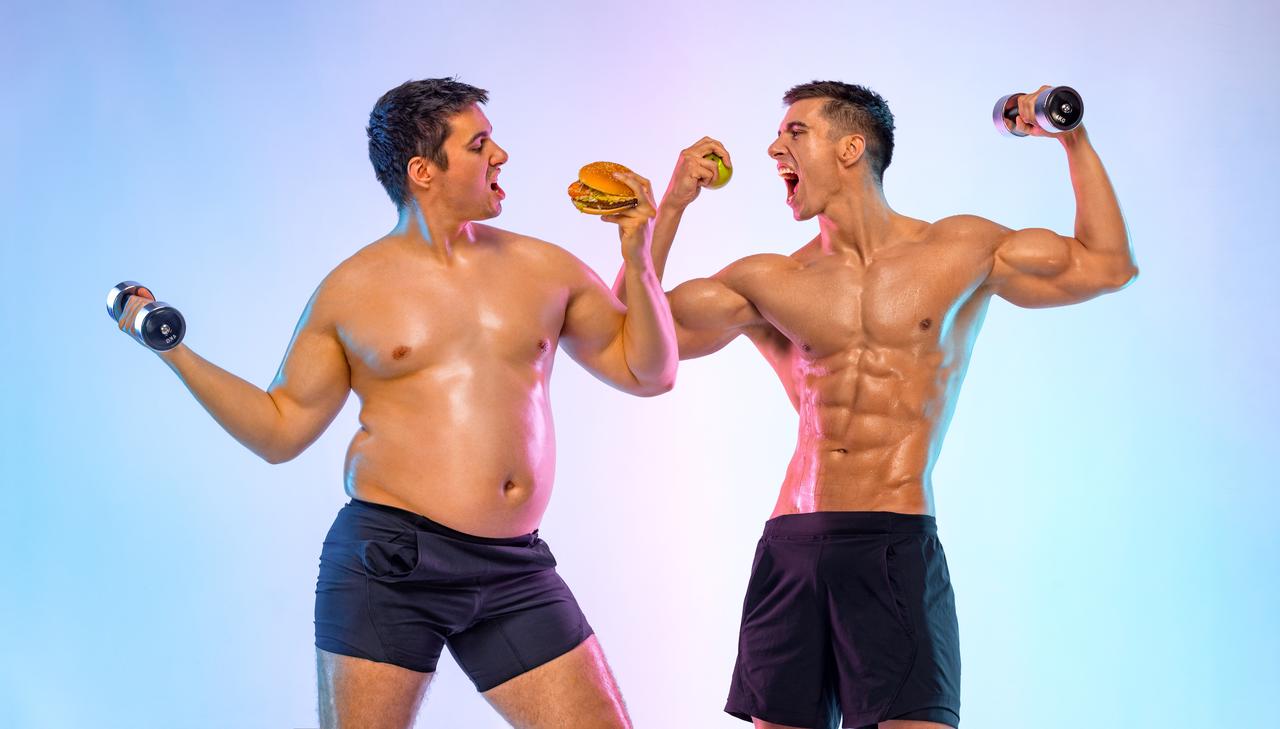
Tips for Preserving Muscle While Losing Weight
Summary:
When you’re on a weight-loss journey, one goal is often top of mind: shedding fat. But what about preserving muscle? Losing weight without losing muscle mass is key to achieving a lean, strong physique—and it’s entirely possible if you understand how muscle and fat interact during weight loss. This guide breaks down the science behind losing fat and preserving muscle and provides practical tips to help you reach your goals while keeping the muscle you’ve worked hard to build.

The Science of Fat Loss and Muscle Preservation
Let’s start with the basics. Fat and muscle are two distinct types of tissue with very different roles in the body. Fat is stored energy, and when you consume fewer calories than you burn, your body starts to tap into these reserves for fuel, leading to fat loss. Muscle, on the other hand, is active tissue—meaning it burns calories even at rest. When you’re losing weight, the goal is to target fat stores while sparing your lean muscle, which helps maintain metabolism and body strength.
But here’s the catch: muscle loss can happen during weight loss, especially if you’re not taking the right precautions. Losing muscle mass is common when calorie intake is too low, when protein intake is insufficient, or when exercise doesn’t include resistance training. This is because, under certain conditions, the body may start breaking down muscle for energy, particularly when glycogen and fat stores are low.
Why Muscle Loss Happens During Weight Loss
Muscle loss can occur when the body enters a catabolic state—where it breaks down tissue for energy. This can happen in the following scenarios:
- Severe Calorie Deficits:
If you cut calories too drastically, the body can enter a state of stress. When faced with insufficient energy, it may start using muscle protein for fuel in addition to stored fat. Extreme calorie restriction slows the metabolism and often results in a higher percentage of muscle loss, making it harder to maintain weight loss long-term.
2.Inadequate Protein Intake:
Protein provides essential amino acids needed for muscle maintenance. Without enough protein, the body lacks the building blocks to repair and sustain muscle tissue, especially when you’re in a calorie deficit. Low protein intake can lead to muscle loss even if you’re exercising regularly.
3.Lack of Strength Training:
Strength training sends a signal to your muscles that they’re needed, which helps prevent breakdown. When weight loss programs rely solely on cardio, the body doesn’t receive the “stimulus” to preserve muscle, increasing the likelihood of muscle loss.
4.Overdoing Cardio Without Balance:
Cardio can be effective for weight loss but can also lead to muscle loss when done excessively, especially without adequate nutrition. Long bouts of cardio can result in the body using muscle tissue for energy, especially if glycogen stores are depleted.
5. Poor Recovery and Sleep:
Recovery, particularly sleep, is crucial for muscle repair and maintenance. During deep sleep, the body releases growth hormone, which is essential for muscle growth. When sleep is insufficient, muscle recovery and protein synthesis are compromised, increasing the risk of muscle breakdown.
How to Preserve Muscle While Losing Weight
If you’re on a weight-loss journey and want to maintain muscle tone, here’s what I learned from both science and experience that can help you lose fat without losing strength.
1. Prioritize Protein: Your Muscle’s Best Friend
Protein is essential for muscle maintenance during weight loss. When you’re in a calorie deficit, consuming enough protein helps preserve muscle mass by providing the amino acids your body needs for repair and growth. Protein also has a high thermic effect, meaning your body burns calories to digest it, which supports metabolism during weight loss.
How Much Protein?
Aim for 1.6 to 2.2 grams of protein per kilogram of body weight daily if you’re actively trying to lose fat and preserve muscle. Great protein sources include lean meats, fish, eggs, legumes, and plant-based proteins like tofu.
2. Strength Training: Keep the Muscle You Have
Strength training signals your body that your muscles are needed, even while in a calorie deficit. Lifting weights or doing resistance training helps protect your hard-earned muscle mass and encourages fat loss instead of muscle loss.
Recommended Routine:
Include strength training 2-3 times per week, focusing on compound movements like squats, deadlifts, and bench presses. These exercises engage multiple muscles, making them highly effective for building and preserving strength. If you’re new to lifting, start with bodyweight exercises or light weights, gradually increasing as your strength builds.
3. Don’t Overdo the Cardio: Balance is Key
Cardio is a helpful tool for creating a calorie deficit, but too much cardio can increase muscle loss, especially if you’re already in a calorie deficit. Instead, aim for a balanced approach by incorporating moderate-intensity cardio sessions a few times a week without overdoing it.
Balanced Cardio Tips:
Limit cardio to 2-3 sessions per week, each lasting about 20-30 minutes. Focus on low-impact activities like brisk walking or cycling, which can help burn calories without excessively stressing the body or tapping into muscle tissue.
4. Eat Enough Calories: Slow and Steady Wins the Race
One of the biggest mistakes people make when losing weight is creating too large a calorie deficit. While it may seem like cutting calories drastically will speed up weight loss, it often leads to muscle loss and metabolic slowdown. Your body needs a certain amount of fuel to maintain muscle, so aim for a moderate deficit that allows for gradual, sustainable fat loss.
What’s a Safe Calorie Deficit?
Aiming for a 500-700 calorie deficit per day typically results in a steady weight loss of about 1-2 pounds per week. This slower approach is more likely to preserve muscle mass and helps you avoid burnout.
5. Stay Hydrated: Water Supports Muscle Health
Dehydration can lead to muscle cramps and reduce workout performance, making it harder to maintain muscle while in a calorie deficit. Proper hydration supports muscle function and helps flush out byproducts of metabolism, aiding recovery and performance.
Hydration Tips:
Aim for at least 2-3 liters of water per day, adjusting for exercise intensity and climate. If you’re training hard, consider electrolyte replacements to keep your body balanced and reduce muscle fatigue.
6. Get Quality Sleep: Rest is Part of the Process
Sleep is when much of muscle recovery happens. Poor sleep can increase cortisol (a stress hormone) levels, which may promote muscle breakdown and hinder fat loss. By prioritizing 7-9 hours of quality sleep per night, you support your body’s muscle-preserving efforts and keep energy levels high.
Sleep Strategy:
Establish a consistent sleep schedule, avoid screens an hour before bed, and create a relaxing pre-sleep routine. The combination of adequate sleep and rest days will give your muscles time to repair, grow, and support your weight-loss journey.
Putting It All Together: A Balanced Approach for Fat Loss and Muscle Preservation
Losing weight while preserving muscle requires a mindful approach that combines nutrition, strength training, hydration, and recovery. While it may take a bit longer than crash dieting, the result is a leaner, stronger, and healthier body that you’ll be able to maintain in the long run. By focusing on these principles, you’ll not only reach your weight-loss goals but also set yourself up for sustained success and a high-functioning metabolism.
Remember, muscle is your secret weapon in weight loss, helping you burn more calories even at rest. So as you drop the pounds, take the steps to preserve your strength—you’ll thank yourself in the long run.
References:
1. Phillips, S. M., & Van Loon, L. J. C. (2011). “Dietary Protein for Athletes: From Requirements to Optimum Adaptation.” Journal of Sports Sciences, 29(sup1), S29-S38.
2. Mettler, S., Mitchell, N., & Tipton, K. D. (2010). “Increased Protein Intake Reduces Lean Body Mass Loss during Weight Loss in Athletes.” Medicine & Science in Sports & Exercise, 42(2), 326-337.
3. Cermak, N. M., et al. (2012). “Protein Supplementation Augments the Adaptive Response of Skeletal Muscle to Resistance-Type Exercise Training: A Meta-Analysis.” American Journal of Clinical Nutrition, 96(6), 1454-1464.
Meet Fitnexa, your AI-driven companion that turns everyday habits into a positive, uplifting journey. From effortless meal analysis (including recipe suggestions) to personalized coaching and real-time support, Fitnexa keeps you on track toward lasting wellness — so you can stay younger, live longer.
https://apple.co/4hr8JGW





Leave a comment
This site is protected by hCaptcha and the hCaptcha Privacy Policy and Terms of Service apply.